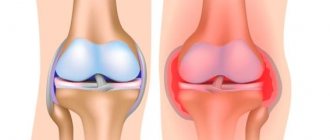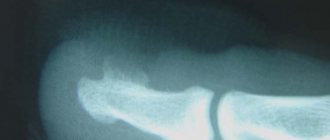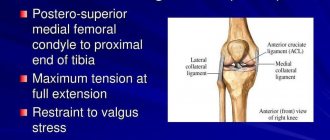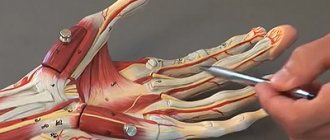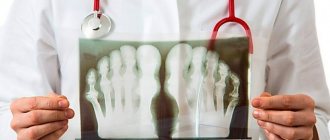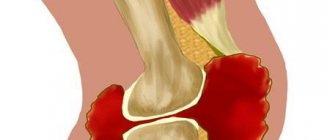What is jaw necrosis?
This is a dangerous dental pathology in which, due to injury or infection, a purulent process begins in the hard tissues of the face, which, with further development, completely destroys bone cells - osteocytes. If left untreated, this disease can lead to severe disability and even death.
Before moving on to a detailed description of the disease, diagnostic methods and therapy, we will immediately answer the question: is it possible to prevent the development of this disease? Prevention measures are simple, do not require much effort and are accessible to everyone:
- giving up bad habits that negatively affect the condition of the oral cavity and the body as a whole - smoking and alcohol abuse;
- proper, nutritious nutrition, providing the body with all the necessary micro- and macroelements;
- preventive examination by a dentist and professional oral hygiene every 6 months;
- timely treatment of all dental diseases - from caries to cysts and granulomas;
- daily home hygiene - 2 times a day, morning and evening, after meals.
Since cancer and chemotherapy are risk factors that provoke necrosis of the jaw, after them it is necessary to visit a dentist who will conduct an examination and, if necessary, prescribe medications that will prevent bone loss.
Another point is that osteonecrosis can occur due to the use of bisphosphonates, drugs that doctors prescribe to treat osteoporosis and a number of cancers. This is bisphosphonate osteonecrosis. Therefore, when prescribing such drugs, it is also necessary to monitor the condition of the jaw bones by the dentist.
Basic symptoms
Symptoms of jaw necrosis resemble body poisoning
It is very important not to make a mistake with the diagnosis. Symptoms vary depending on the type and form of the disease.
The average signs of the disease are as follows:
- significant enlargement of cervical lymph nodes;
- upon percussion, tooth pain is felt;
- the dentition becomes mobile;
- facial asymmetry, swelling, as well as hyperemia of the palate, lips, gums, and cheeks occur;
- inflammatory changes are detected in the blood formula;
- red blood cells and protein are detected in the urine, which signals kidney damage;
- symptoms of intoxication.
Then comes the acute phase of the disease, which lasts up to two weeks. It has the following symptoms:
- chills and fever;
- sleep disturbance;
- sudden surges in pressure;
- pain radiating to the ear, eye socket, temporal lobes;
- numbness of lips;
- sharpening of facial features;
- earthy skin tone;
- yellowness of the sclera.
During the subacute phase, imaginary relief occurs. This is due to the release of pus directly into the tissue. But the destructive process still continues. In the chronic type, the course of the disease is protracted. Infected tissues die and are rejected. In their place, fistulas and sequestra are formed. Osteomyelitis is dangerous due to the complications that arise. These include abscess of the brain and eyelids, meningitis, pneumonia, sepsis, the development of phlegmon and other terrible ailments. Jaw fractures are also recorded. In some cases, disability occurs. A fatal outcome cannot be ruled out.
Sources
- https://denta.help/terapevticheskaya/patologii-kostnoj-tkani/osteonekroz-chelyusti-297
- https://infozuby.ru/nekroz-chelyusti.html
- https://revmatolog.org/drugie-zabolevaniya/nekroz-chelyusti.html
- https://mirzubov.info/story/nekroz-chelyusti
Causes of the disease
Necrosis of the jaw is in one way or another associated with the penetration of infections into the oral cavity - and most often this occurs due to untreated dental diseases (caries, granulomas, pulpitis, periodontitis, and so on). The most common route of infection is through the tissue of the affected dental pulp. However, besides this, there are other reasons that cause the breakdown of bone tissue:
- damage to the body by pathogens of infectious diseases (staphylococci, streptococci, E. coli, and so on);
- disruptions in the functioning of the circulatory and immune systems;
- lack of quality home hygiene;
- formation of massive tartar;
- long-term use of steroid hormones;
- oral injuries with infection and complications of burn disease;
- purulent otitis media, tonsillitis and other complicated ENT diseases;
- poisoning with toxins (for example, arsenic);
- diabetes mellitus and other pathologies of the endocrine system;
- abuse of nicotine and alcohol.
Clinical observation No. 1
| Patient Sh., 33 years old, experience of drug addiction to desomorphine for 3 years. Diagnosis: Diffuse osteonecrosis of the body of the lower jaw, alveolar process of the upper jaw. | |
| Rice. 1. Necrosis of the oral mucosa, gaping of the skeletonized alveolar part of the lower jaw | Rice. 2. Orthopantomogram of the jaws: demarcation of the zone of osteonecrosis in the lower jaw, signs of sequestration, diffuse osteoporosis of the alveolar process of the upper jaw, widening of the periodontal crevices of the teeth |
| Rice. 3. Sequestration of the body of the lower jaw | Rice. 4. Remodeling of the bone tissue of the lower jaw after complex treatment. Sequestration of the alveolar process of the maxilla |
| Rice. 5. Pathological mobility, purulent-necrotic plaque on the teeth of the upper jaw | Rice. 6. Orthopantomogram 2 years after the end of complex treatment. Remodeling of the bone tissue of the upper and lower jaw Traumatic bilateral fracture of the body of the lower jaw is not associated with osteonecrosis |
| After removal of the sequestra, the inflammatory-necrotic process on the affected jaw stopped in 95% of cases. After sequestrectomy, the demarcation zone is easily determined visually; a bone cavity lined with granulations with smooth edges is palpated. In the postoperative period, remodeling and new formation of bone tissue occurs, confirmed by x-ray data. |
Osteonecrosis of the jaw: symptoms
At the initial stage, it is quite difficult to identify, since the symptoms are similar to those of other oral diseases. It is often asymptomatic in the first months and first appears when the immune system is weakened or when bone destruction begins. Main signs of the disease:
- pain in the infected tooth, aggravated by pressure;
- tooth mobility;
- swelling of the mucous membranes;
- the appearance of pus from gum pockets;
- bad breath;
- enlargement of regional lymph nodes;
- difficulty opening the mouth;
- pain while swallowing;
- breathing problems;
- decreased sensitivity of soft tissues, numbness and tingling in the affected area;
- facial asymmetry.
If you have a toothache, and the pain intensifies, radiates to the area of the eye, ear, head, if the tooth has become mobile, and pus is released from the gums, then you should immediately consult a dentist.
Treatment methods
The approach to drug treatment of osteoporosis of the jaw is no different from medical tactics for bone resorption of any location.
Medicines from the following pharmacological groups are prescribed:
- bisphosphonates;
- calcium-containing preparations enriched with vitamin D;
- estrogen hormones, calcitonin derivatives;
- immunomodulators;
- vitamin therapy.
To combat osteoporosis of the jaw, local therapy is of great importance. Sanitation of the oral cavity is necessary - removal of loose teeth, use of gels with antibiotics to treat gum pockets, means to strengthen enamel, removal of tartar, medications against periodontal disease. Antiseptic solutions are used to rinse when a secondary infection occurs.
You must carefully follow all the dentist's advice regarding oral care - brush your teeth after eating, regularly use special gels for periodontal disease, and use decoctions of anti-inflammatory herbs (sage, chamomile) to rinse your mouth.
Physiotherapy is also prescribed - thermal procedures, electrical stimulation of facial muscles, darsonval, electrophoresis with anti-inflammatory and vascular solutions.
When conservative methods are ineffective to reduce pain, fix the jaws and maintain their functioning, maxillofacial surgeons use special splints. In particularly difficult cases, surgical intervention—endoprosthetics—is indicated.
Osteoporosis of the jaw significantly worsens the condition of the oral cavity. There is also an inverse relationship: affected teeth and gums accelerate the destruction of the jaw bones. Treatment of resorption of any localization improves the condition of teeth and gums.
Nutrition tips
It is necessary to change the diet by enriching the diet with dairy derivatives, lean meat, seafood, herbs, and eggs. The goal is to increase the intake of calcium and other minerals into the body, cope with hypovitaminosis, and improve protein absorption. Proper nutrition will gradually improve the entire digestive tract, of which the oral cavity is a part.
The patient will have to come to terms with some restrictions, in particular, give up carbonated and alcoholic drinks, fried and spicy foods, and excess coffee consumption. You should not chew nuts, crackers, or candies, so as not to overload the jaw bones.
Preference should be given to boiled, stewed and steamed foods that have a soft consistency.
Possible complications
Like any process of bone destruction, osteoporosis of the jaw leads to many negative consequences:
- difficulty chewing food;
- speech difficulties;
- jaw deformation;
- spontaneous fractures caused by eating, yawning, speaking;
- osteonecrosis of the jaw;
- significant deterioration in quality of life;
- formation of an inferiority complex.
How to avoid getting sick
To prevent the development of pathology, you need to follow generally accepted recommendations for the prevention of bone loss:
- be attentive to your health since childhood;
- promptly treat any diseases of the stomach and intestines;
- eat right, ensuring sufficient intake of calcium and other minerals from food;
- lead a healthy and active lifestyle;
- carry out a course of vitamin-mineral complexes, especially during the transition periods of the year;
- Visit the dentist regularly and promptly treat oral diseases.
It is important to remember that in old age the daily requirement of calcium increases, so it will not be possible to replenish it through food. We need medications and an integrated approach to solving the problem
Diagnosis and classification
There are 3 main methods for diagnosing the disease:
- radiography;
- biochemical blood test, general blood and urine analysis;
- bacteriological culture of discharge from a purulent focus.
X-rays also help identify foci of sequestration, areas with coarse-fibered bone tissue, areas of osteosclerosis and uneven contours.
Based on the diagnostic results, the doctor determines the type of necrosis:
- odontogenic - develops due to dental diseases;
- hematogenous - the infection spreads through the bloodstream;
- traumatic - after a jaw injury.
The diagnosis also determines the degree of necrosis:
1st - bone tissue is destroyed by 10%, the functions of the jaw are not yet impaired;
2nd - microcracks in the bone, pain, restrictions in movements of the maxillofacial area;
3rd - more than 50% of tissues are affected, constant pain;
4th - massive bone destruction.
According to the nature of the course, osteonecrosis can be acute, subacute or chronic. Taking into account all these factors, the doctor chooses a treatment method.
Reviews
The severity and prognosis of osteonecrosis depends on many factors - the patient’s immunity, his general health, the cause of osteonecrosis, the stage of the disease, etc.
If you have personally encountered this serious pathology, please share your experience. What form of ONJ were you diagnosed with, what treatment method was used, and how did this alarming situation end? The comment form is at the bottom of the page.
If you find an error, please select a piece of text and press Ctrl+Enter.
Tags jaw
Did you like the article? stay tuned
Previous article
Etiology of ptyalism and ways to combat the disease
Next article
Do TMJ osteophytes lead to complete immobility of the jaws?
Therapy methods
Treatment of necrosis is long and quite complex. But with timely treatment, the prognosis for treatment of necrosis of both the lower and upper jaw is quite favorable (although damage to the upper jaw bone is considered more dangerous).
First, it is necessary to eliminate the primary purulent focus: remove the tooth, prescribe anti-infective drugs or surgically treat wounds after injury. Then the dental surgeon opens the purulent formations, carries out antiseptic treatment and prescribes antibiotics, painkillers, anti-inflammatory drugs, as well as agents for tissue regeneration.
Also, after removing dead tissue, the dentist can strengthen the teeth using splinting. As additional measures, doctors can prescribe hyperbaric oxygen therapy, ultraviolet irradiation of blood, plasmapheresis, local physiotherapy, including the use of ultrasound and UHF. If, due to chronic necrosis, it is necessary to remove areas of bone tissue, then these areas are filled with special materials with antibiotics.
Complete ban on white phosphorus
The production of matches from white phosphorus was cheaper than similar, but safe ones from red. The attractive economics of production provided low costs and high profits, so factory owners continued to use the toxin. A larger number of “phosphorus jaws” have been recorded in the USA and Great Britain. Workers in match factories in the Russian Empire also often suffered from almost complete tooth loss, as reported by factory inspectors. The Berne Convention of 1906 put an end to this story, which legally banned the use of white phosphorus in match production, after which the world began a campaign to abandon the toxin, which lasted until the mid-1920s.
Complications
An incorrect diagnosis or untimely initiation of therapy for osteomyelitis leads to the development of severe complications, which have a high mortality rate and often cause disability.
The most common complications of osteomyelitis of the jaw are:
- Abscesses of soft tissues, perimaxillary phlegmons and purulent leaks, which tend to quickly spread to the cervical region and the mediastinum. This pathology is extremely dangerous, since the sepsis associated with it (in non-medical vocabulary the term “blood poisoning” is used) quickly leads to damage to vital organs with the development of septic shock and death.
- Thrombophlebitis of the facial veins, mediastinitis, pericarditis or severe pneumonia.
- Purulent damage to the membranes of the brain with the development of meningitis.
- If the purulent focus is localized in the upper jaw, the infection may spread to the orbital region with damage to the eyeball, atrophy of the optic nerve, which leads to irreversible loss of vision.
Treatment
Treatment of osteomyelitis of the jaw bones consists of simultaneously solving two important problems:
- The fastest elimination of the focus of purulent inflammation in the bones and surrounding soft tissues.
- Correction of functional disorders that were provoked by the presence of a severe infectious process.
All patients, without exception, are subject to hospitalization in a surgical department specializing in maxillofacial surgery. If there is no such hospital, then treatment is carried out in a department with experience in dental surgery.
The complex of treatment measures includes:
- Surgical intervention with opening of the purulent focus, cleaning it of necrotic masses and complete drainage.
- The use of antibacterial drugs with a wide spectrum of activity.
- Detoxification and anti-inflammatory treatment, strengthening the immune system.
General care is also important, with strict bed rest, nutritious but gentle nutrition (hypoallergenic diet including all necessary nutrients, vitamins and minerals).
